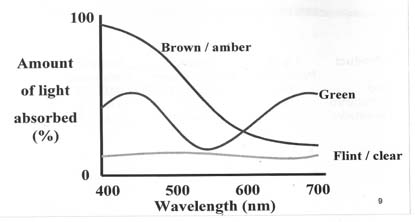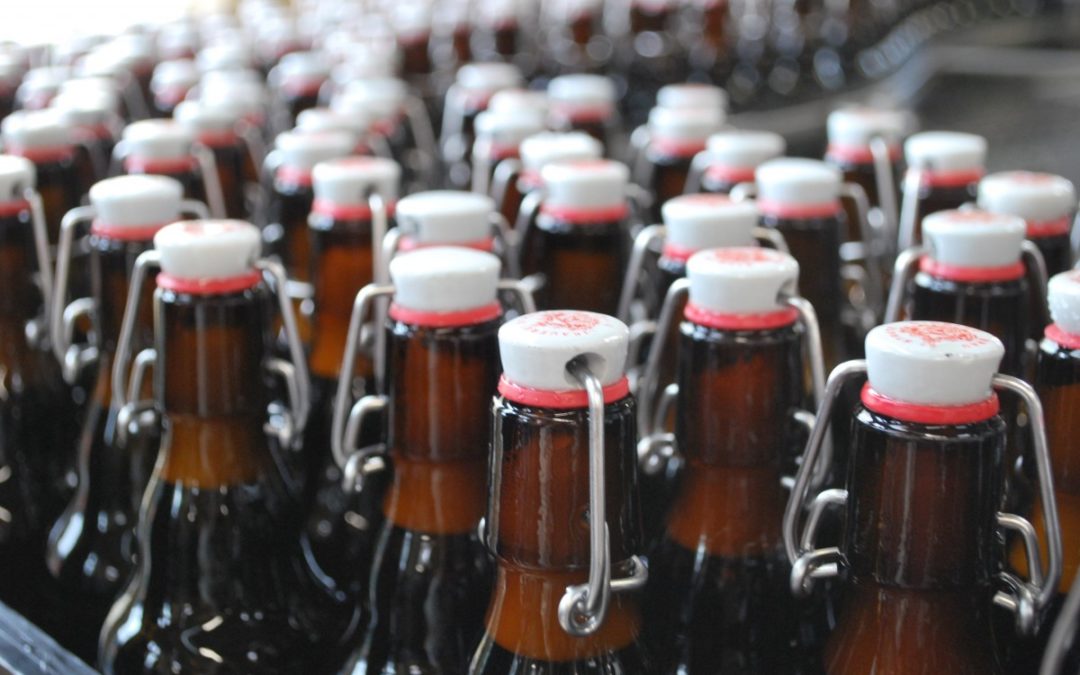Why are brown beer bottles brown? The easy answer is to protect beer from light. Only recently (in 2001) did we figure out how light causes the fault called light struck or skunked beer.
Chemists at the University of North Carolina and Ghent University in Belgium found that when a beer has been exposed to light for a period of time, Hop-derived molecules, called isohumulones, are degraded, forming a thiol called 3-methyl-2-butene-1-thiol or just MBT for short. The amazing thing about this compound is that we can detect it at concentrations as low as 7 parts per trillion. This is equal to 7 seconds in 30,000 years, or a drop in an Olympic sized swimming pool! The perhaps not-so-amazing thing is that this compound gives beer a “skunky” or “cat urine” aroma and taste. Obviously one would want to avoid this, and that’s why beer is best in dark brown glass bottles that act as the beer’s own sunglasses.
Kegged beer of course will not go skunky – at least not until it’s poured into a glass and served outside in bright sunlight – that will turn any beer skunky within minutes.
Brown beer bottles aid in protecting beer from being light-struck, Green or clear bottles provide little to no protection. The ubiquitous slice of lime served with a popular Mexican beer is nothing but clever marketing since it helps camouflage the smelly MBT formed because it is in clear glass! It’s also been said that bottled beer can become light-struck in less than one minute in bright sun, after a few hours in diffuse daylight, and in a few days under normal fluorescent lighting.
English drinkers who had been huddled in the pub all winter found that their favourite beer developed a flavour they called “a touch of spring”, due (we now know) to the fact that they were now drinking in the beer garden in full sun!
How can I avoid skunked beers?
Simple, don’t leave your beer exposed to light, and bottle in brown beer bottles which effectively screen the light. If you are drinking in full sun use smaller glasses more frequently or get a German style stein with a lid!
To experience the effect more clearly, one of this is one of the simplest of experiments to try:
Select a beer that you know well, be sure that the carton is unopened (to protect from light) and open two bottles. Using a funnel with a tube on, decant one bottle back into a chilled brown glass bottle the other into a chilled green glass or clear glass beer bottle. Recap as soon as possible. Make sure the beer is as cold as you can get it – it will lose less gas that way. The reason for the brown beer bottle to brown beer bottle transfer is so the both samples have the same carbonation level. Now take both recapped bottles and place them in the sun for just 8 – 10 minutes then put them back in the fridge to chill.
Next day pour a sample from each bottle and do a side by side comparison. The brown beer bottle sample should be very similar to the others in the carton – just a little less carbonated. The green bottle however can develop a papery or cardboard like flavour, become less bitter, and loses sprightliness and becomes dull. This beer is said to be light struck. The culprit is hop constituents being degraded by near UV light. Brown glass adsorbs 100% of light at this wavelength green glass about 40% and clear glass around 10%.
You can sometimes notice this if you are drinking in the sun the beer in your glass will change flavour if you take too long about it! If you have to drink in the sun try smaller glasses or get an old style German Stein with a lid!
Relative light adsorption for different coloured glass


